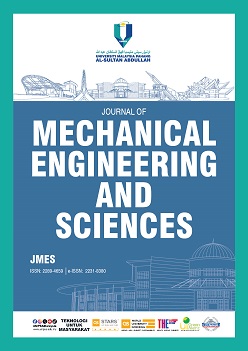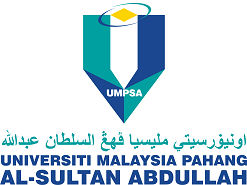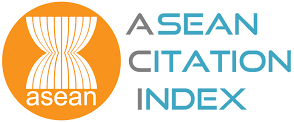Machining performance of SS 304 steel with hybrid nanocutting fluids using Taguchi-based gray relational analysis
DOI:
https://doi.org/10.15282/jmes.18.4.2024.6.0812Keywords:
Neem oil, Nanocutting fluids, Taguchi, Turning, OptimizationAbstract
Traditional cutting fluids are often insufficient in managing the heat, friction generated during machining and environmental issues. The use of hybrid nanocutting fluids contributes to green manufacturing by reducing the need for excessive coolant flow and minimizing environmental impact. This study investigates the machining performance of SS 304 steel using hybrid nanocutting fluids and evaluates the results through Taguchi-based Gray Relational Analysis (GRA). The hybrid nanocutting fluids were formulated by dispersing a combination of nanoparticles into a conventional cutting fluid. A series of turning experiments were conducted using Taguchi L27 design of experiment. The results demonstrated that the neem oil with 1.5% alumina and graphene inclusion observed significantly improved the machining efficiency of SS 304 steel, offering reduced tool temperature, cutting forces, tool vibrations and surface roughness. A notable reduction of cutting temperature, cutting force, tool vibration, and surface roughness by 35%, 18%, 27%, and 34% respectively is observed. From GRA, outstanding results is obtained at cutting speed 900 rpm, a feed rate of 40 mm/min, a depth of cut of 0.6 mm, and a 1.5 vol % concentration of hybrid nanofluid. The optimal cutting condition helps in reducing the cutting temperature, tool vibrations cutting forces and improves surface roughness.
References
[1] A. M. M. Ibrahim, M. A. E. Omer, S. R. Das, W. Li, M. S. Alsoufi, A. Elsheikh, “Evaluating the effect of minimum quantity lubrication during hard turning of AISI D3 steel using vegetable oil enriched with nano-additives,” Alexandria Engineering Journal, vol. 61, no. 12, pp. 10925–10938, 2022.
[2] J. E. Manikanta, B. N. Raju, C. Prasad, B. S. S. P. Sankar, “Machining performance on SS304 using nontoxic biodegradable vegetable-based cutting fluids,” Chemical Data Collections, vol. 42, p. 100961, 2022.
[3] P. Kumar, S. K. Sharma, R. K. Raj Singh, “Effect of cooling media on bead geometry microstructure and mechanical properties of wire arc additive manufactured IN718 alloy,” Advances in Manufacturing, vol. 12, no. 1, pp. 124-149, 2024.
[4] S. F. Altaf, M. A. Parray, M. J. Khan, M. F. Wani, F. A. Bhat, “Machining with minimum quantity lubrication and nano-fluid MQL: A review,” Tribology Online, vol. 19, no. 3, pp. 209-217, 2024.
[5] J. E. Manikanta, C. Nikhare, N. K. Gurajala, N. Ambhore, R. R. Mohan, “A review on hybrid nanofluids: preparation methods, thermo physical properties and applications,” Iranian Journal of Science and Technology, Transactions of Mechanical Engineering, vol. 48. no. 1, pp. 1-13, 2024
[6] P. K. Jadhav R. S. N. Sahai, “Sustainable machining of AISI4140 steel: a Taguchi-ANN perspective on eco-friendly metal cutting parameters,” Journal of Materials Science: Materials in Engineering, vol. 19, no. 1, pp. 1-13, 2024.
[7] R. L. Virdi, S. S. Chatha, H. Singh, “Performance evaluation of nanofluid-based minimum quantity lubrication grinding of Ni-Cr alloy under the influence of CuO nanoparticles,” Advances in Manufacturing, vol. 9, no. 4, pp. 580-591, 2021.
[8] N. Sateesh, R. Subbiah, B. Nookaraju, A. A. Lakshmi, “Analysis on effect of nanofluid on process parameters in machining of EN19 steel,” Advanced Materials Processing Technology, vol. 8, no. 3, pp. 1757-1767, 2022.
[9] A. Zareie M. Akbari, “Hybrid Nanoparticles Effects on Rheological Behavior of water-EG Coolant under Different Temperatures: An Experimental Study,” Journal of Molecular Liquids, vol. 230, pp. 408-414, 2017.
[10] R. K. Singh, A. K. Sharma, A. R. Dixit, A. K. Tiwari, A. Pramanik, A. Mandal, “Performance evaluation of alumina-graphene hybrid nano-cutting fluid in hard turning,” Journal of Cleaner Production, vol. 162, pp. 830-845, 2017.
[11] X. C. Zhang, C. Li, Y. Zhang, D. Jia, B. Li, Y. Wang, M. Yang, Y. Hou, X. Zhang , “Performances of Al2O3/SiC hybrid hanofluids in minimum-quantity lubrication grinding,” The International Journal of Advanced Manufacturing Technology, vol. 86, no. 9–12, pp. 3427–3441, 2016.
[12] M. Jamil, A. M. Khan, H. Hegab, L. Gong, M. Mia, M. K. Gupta, N. He, “Effects of hybrid Al2O3-CNT nanofluids and cryogenic cooling on machining of Ti–6Al–4V,” The International Journal of Advanced Manufacturing Technology, vol. 102, pp. 3895-3909, 2019.
[13] N. Ahammed, L. G. Asirvatham, S. Wongwises, “Entropy generation analysis of graphene-alumina hybrid nanofluid in multiport mini channel heat exchanger coupled with thermoelectric,” International Journal of Heat and Mass Transfer, vol. 103, pp. 1084–1097, 2016.
[14] Y. Zhang, C. Li, D. Jia, D. Zhang, X. Zhang, “Experimental evaluation of the lubrication performance of MoS2/CNT nanofluid for minimal quantity lubrication in Ni-based alloy grinding,” International Journal of Machine Tools and Manufacture , vol. 99, pp. 19–33, 2015.
[15] Y. Song, H. Cao, D. Qu, H. Yi, X. Kang, X. Huang, J. Zhou, C. Yan, “Surface integrity optimization of high-speed dry milling UD-CF/PEEK based on specific cutting energy distribution mechanisms effected by impact and size effect,” Journal of Manufacturing Processes, vol. 79, pp. 731–744, 2022.
[16] N. A. C. Sidik, S. Samion, J. Ghaderian, M. N. A. W. M. Yazid, “Recent progress on the application of nanofluids in minimum quantity lubrication machining: A review,” International Journal of Heat and Mass Transfer, vol. 108, pp. 79–89, 2017.
[17] S. Tiwari, M. Amarnath, M. K. Gupta, M. A.Makhesana “Performance assessment of nano-Al2O3 enriched coconut oil as a cutting fluid in MQL-assisted machining of AISI-1040 steel,” The International Journal of Advanced Manufacturing Technology, vol. 129, no. 3, pp. 1689-1702, 2023.
[18] A. Das, O. Pradhan, S. K. Patel, S. R. Das, B. B. Biswal, “Performance appraisal of various nanofluids during hard machining of AISI 4340 steel,” Journal of Manufacturing Processes, vol. 46, pp. 248–270, 2019.
[19] O. Ondin, T. Kivak, M. Sarikaya, C. V. Yildirim, “Investigation of the influence of MWCNTs mixed nanofluid on the machinability characteristics of PH 13-8 Mo stainless steel,” Tribology International, vol. 148, p. 106323, 2020.
[20] F. Zhujani, F. Abdullahu, G. Todorov, K. Kamberov “Optimization of multiple performance characteristics for CNC turning of Inconel 718 using Taguchi–Grey relational approach and analysis of variance,’ Metals, vol. 14, no. 2, pp. 1-19, 2024.
[21] P. D. Kamble, A. C. Waghmare, R. D. Askhedkar, S. B. Sahare, M. Patil S. V. Prayagi, “Performance evaluation of CNC turning process for tool tip temperature and tool wear by Taguchi method,” Materials Today: Proceedings, vol. 62, pp. 981-986, 2024.
[22] N. Ambhore, D. Kamble, D. Agrawal, “Experimental investigation of induced tool vibration in turning of hardened AISI52100 steel”, Journal of Vibration Engineering and Technology, vol. 10, pp. 1679–1689, 2022.
[23] N. Li, Y. J. Chen, D. D. Kong, “Multi-response optimization of Ti-6Al-4V turning operations using Taguchi-based grey relational analysis coupled with kernel principal component analysis,” Advances in Manufacturing, vol. 7, pp. 142-154, 2019.
[24] M. Seyedzavvar, H. Abbasi, M. Kiyasatfar, R. N. Ilkhchi, “Investigation on tribological performance of CuO vegetable-oil based nanofluids for grinding operations,” Advances in Manufacturing, vol. 8, pp. 344-360, 2020.
[25] V. Singh, A. K. Sharma, R. K. Sahu, J. K. Katiyar, “Novel application of graphite-talc hybrid nanoparticle enriched cutting fluid in turning operation,” Journal of Manufacturing Processes, vol. 62, pp. 378–387, 2021.
Downloads
Published
Issue
Section
License
Copyright (c) 2024 The Author(s)

This work is licensed under a Creative Commons Attribution-NonCommercial 4.0 International License.






